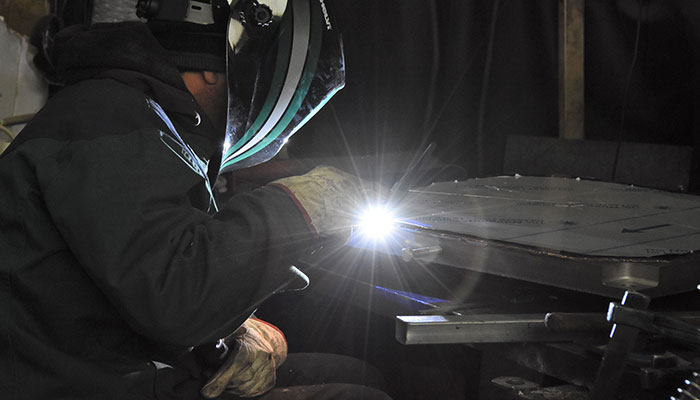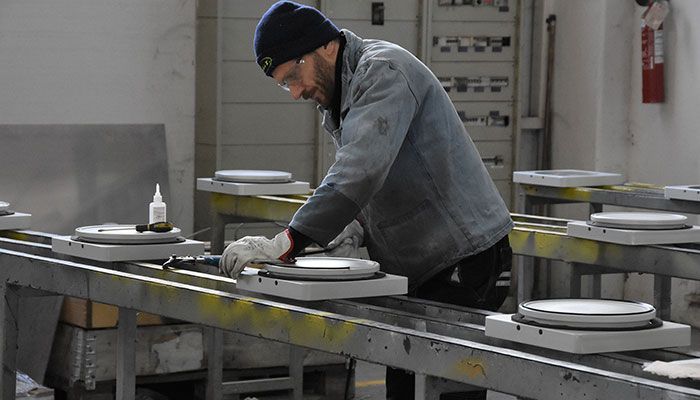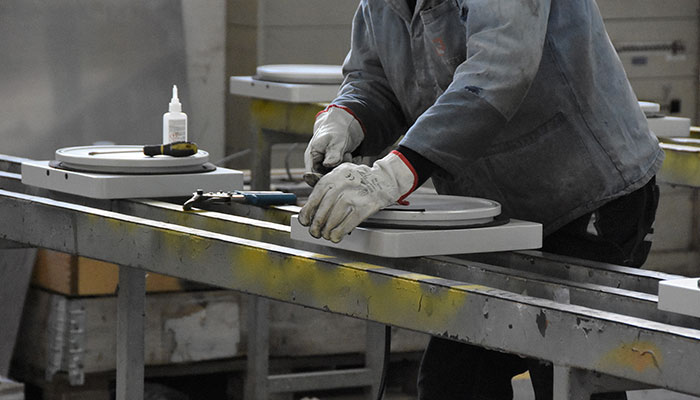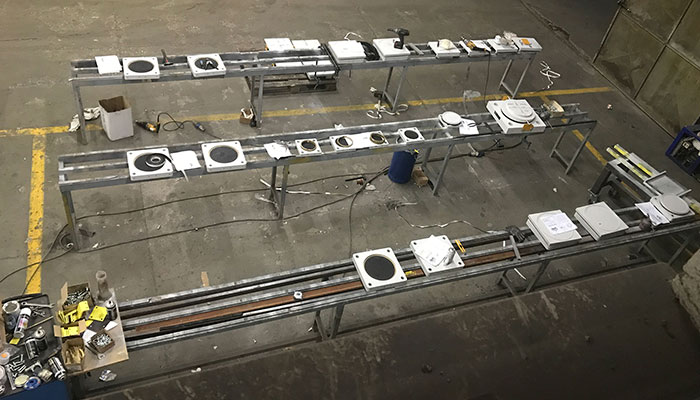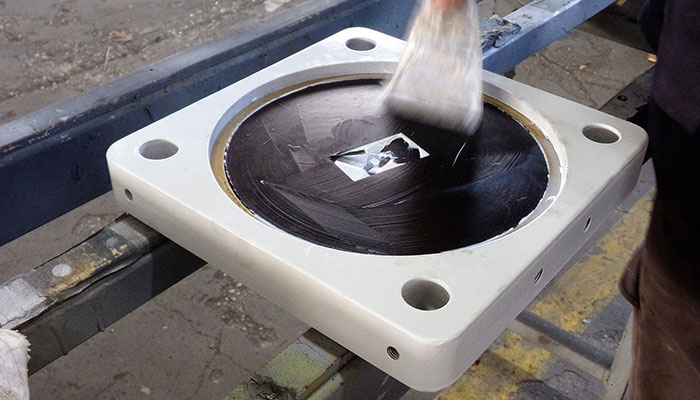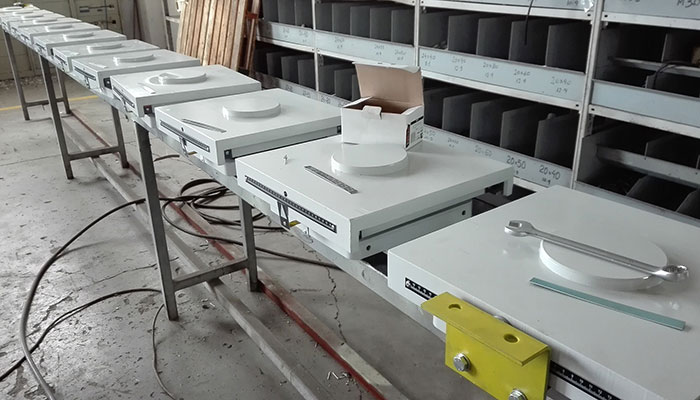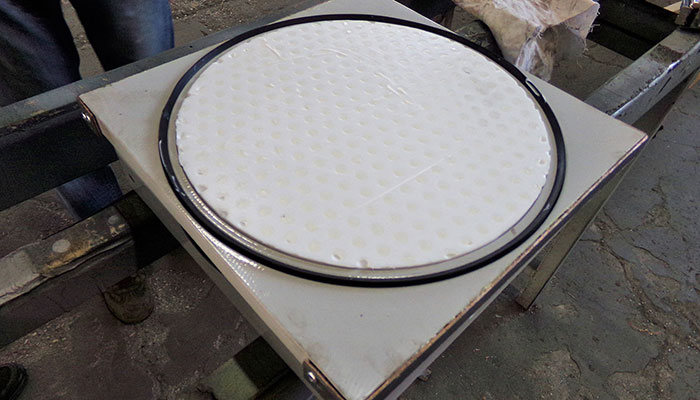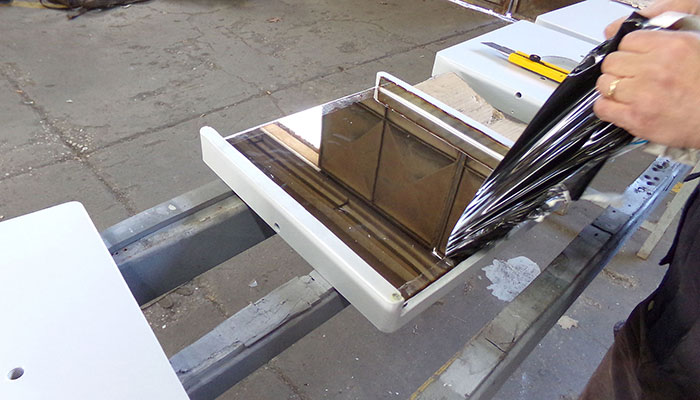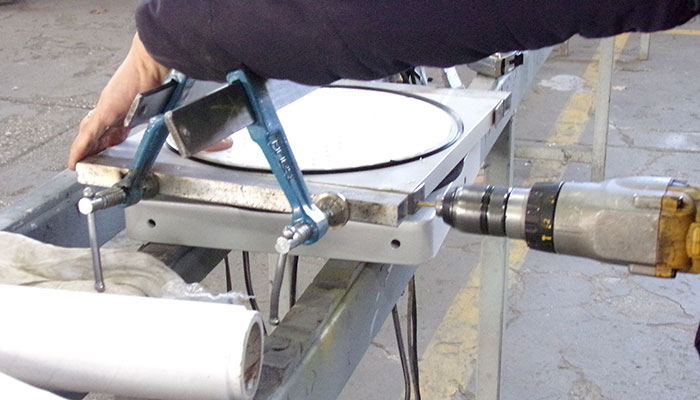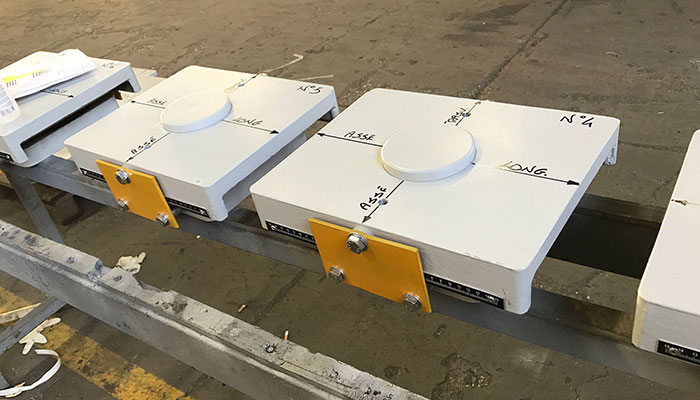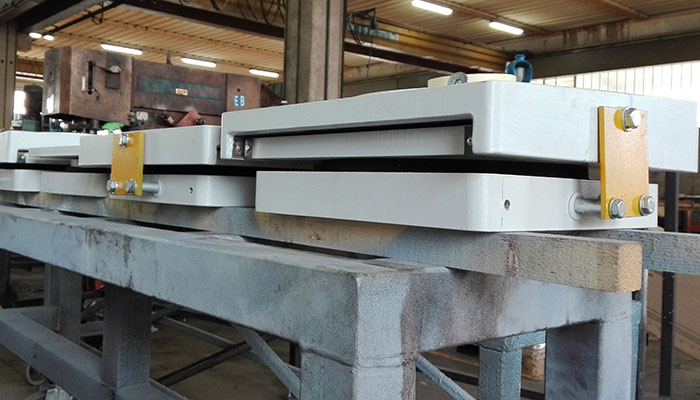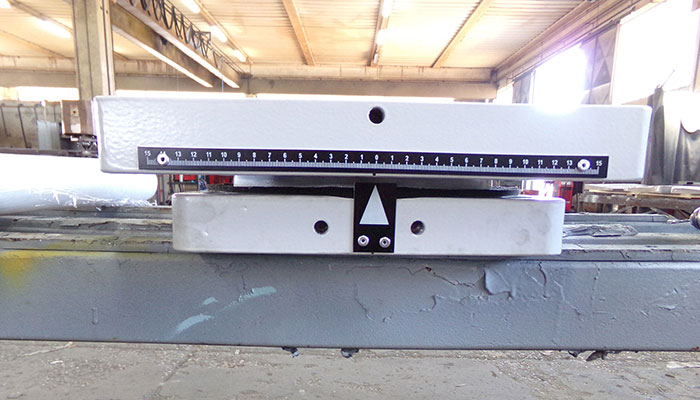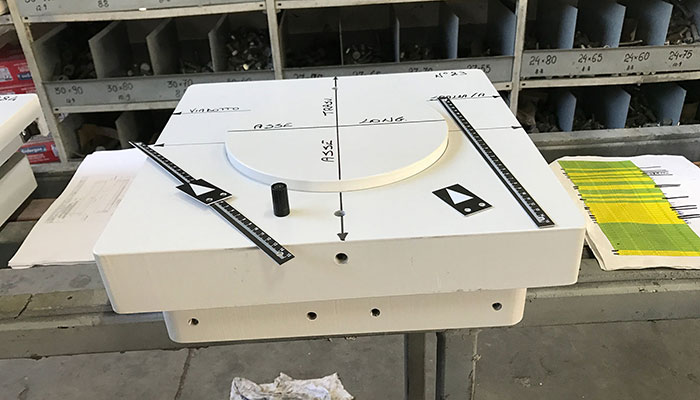The confined elastomeric disc structural bearings consist of a rubber disc housed in a metal base that acts as a ‘container’ (this is why the English name ‘POT’).
The two fundamental physical principles on which these particular structural constraint devices are based are:
- The sliding between two surfaces of materials with very low mutual friction, stainless steel / PTFE, which allow translation movements due to changes in the volume of the superstructure, induced for example by the external temperature gradient.
- The deformation of material (built-in rubber discs) suitable for allowing rotation (usually 0.01rad) and translation.
Depending on the various degrees of freedom we will have three types of structural bearings for viaducts with elastomeric confined disc (POT):
- Fixed POT bearing or hinge constraint
- Unidirectional POT bearing or trolley
- Multi-directional POT bearing or sled
A common feature of all three types is the deformability of the built-in rubber disc that allows rotations around any axis, in accordance with the design requirements. Rotational movements between the superstructure and the underlying structure are guaranteed and at the same time the transfer of vertical loads is ensured. The confined elastomeric disk behaves like a viscous fluid, therefore the vertical deformations due to the loads are null, instead the vertical stiffness is high; the pressure is uniformly distributed and therefore the eccentricity of the vertical load is extremely reduced.
Fixed POT
Fixed bearings for viaducts transmit all the forces but do not allow any displacement.
The number of degrees of freedom of a fixed support can be 1 or 2.
The base is a square-shaped steel plate whose dimensions meet the criteria design required by the regulations (EN 1337 and EN 10025).
The elastomeric disk is housed in a recess and confined inside the base and three concentric brass rings, positioned in a recess in the edge of the elastomeric bearing, avoid the expulsion under pressure of the rubber (that's why the name 'elastomeric disc support confined ').
The piston rests on the elastomeric pad.
The anchoring systems comply with the requirements of the UNI EN reference standard 1337 - part 1 and consist of a pin placed in the upper part of the support (for the transfer of the horizontal action) and by anchor bolts inserted in the base through appropriate holes.
Unidirectional POT
The unidirectional bearing with confined elastomeric disc (unidirectional POT) allows movements in a single direction (in addition to rotation).
The sliding is allowed by the coupling of low friction surfaces such as austenitic steel and PTFE, and by composite materials (CM1).
The basic configuration is that of a fixed elastomeric disk bearing, but unlike this one are inserted the following sliding surfaces:
The anchoring systems comply with the requirements of the UNI EN reference standard 1337 - part 1 and consist of a pin (for transferring the horizontal action) placed in the upper part of the support and by bolts inserted in the base through appropriate holes.
The unidirectional devices are equipped with a graduated scale and measurement index necessary for monitoring the movements.
Multi-directional POT
When a displacement is required in all directions of the support surface, the multidirectional POT bearing devices come into play. Also in this case the support apparatus is composed of the basic configuration of the fixed-type pots with the addition of the unidirectional surfaces and sliding plates, but, unlike the latter, multidirectional type POT, by definition, has no type of guide, ie the sliding plate will be smooth, without any CM1 guide. Without the presence of constraints (unidirectional guides) the device is therefore free to follow the movement of the structure . Unlike the unidirectional ones, multidirectional POT bearings do not have either composite material or pin or anchor bolts (unless a mere centering function).
The anchoring system to the superstructure complies with the requirements of the reference standard UNI EN 1337 - part 1 and since nothing is horizontal the horizontal action is represented only by the friction between the superstructure and the upper plate. The anchoring of the support to the substructure, unlike the other types, is represented only by grooves placed on the lower surface of the back / base, lines that act as improved adherence (grip) and that favor fixing by epoxy resins.
Like unidirectional devices, multidirectional devices also have a graduated scale and measurement index necessary for monitoring movements.
All the surfaces of the external components, to avoid corrosion, are coated with high-performance paints that are applied with painting cycles that comply with the EN 1337 part 9 standard.
All the supports, of any type, are made in compliance with the European standard EN1337: 2005 and provided with CE marking.
With reference to standard EN 1337, part 11, on transport, storage and the installation of the structural bearings, the bridge bearings must be handled with care, furthermore there are threaded holes for housing eyebolts necessary for lifting with mechanical means in the event that it is not possible to move by hand.
The POT bearings for bridges, of any type, are supplied complete with assembly plates to allow their installation and it is important to underline that the arrangement of the POTs in any structure must always take into account the possibility of inspection and replacement of the same.
